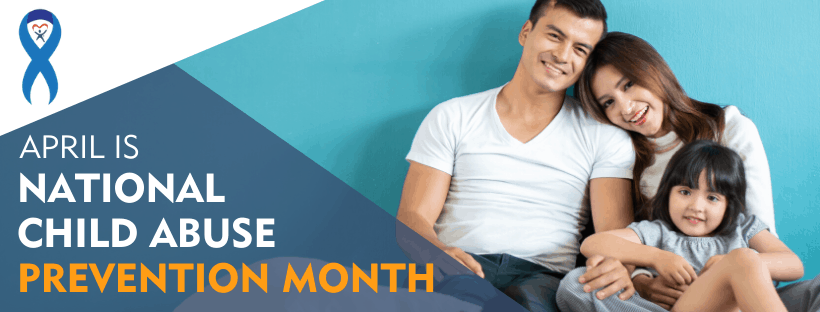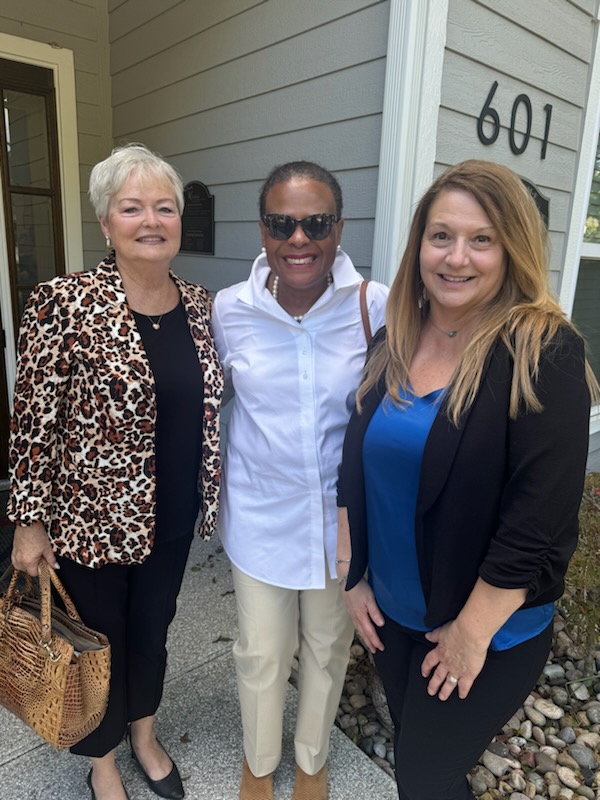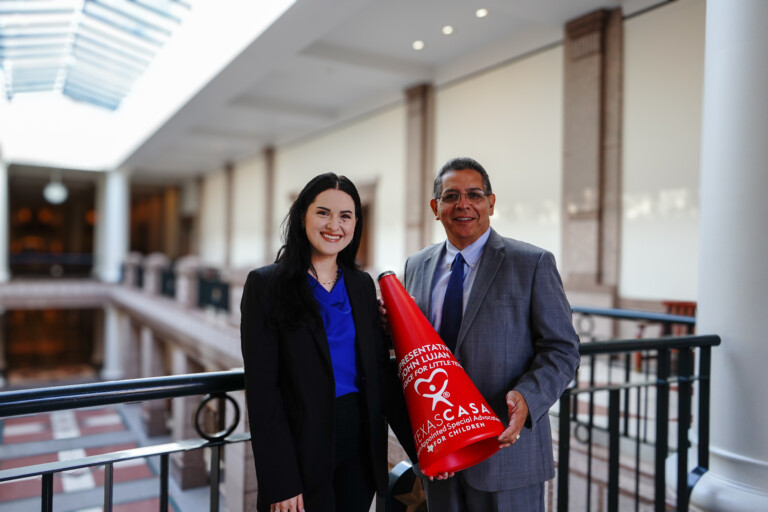Child Abuse & Neglect Prevention: What You Need to Know & What You Can Do
JUMP TO A SECTION

Throughout April, Child Abuse Prevention Month, Texas CASA and other groups will be sharing information and resources about preventing child abuse and neglect. But what does prevention actually look like?
The most important thing to understand is that we can prevent child abuse and neglect. It takes strong communities that have the resources they need to thrive. Imagine a day where we have no child abuse and neglect in our world. What conditions are needed to make that possible?
What do we know now about how we actually prevent child abuse and neglect, as individuals and as a community? On the big-picture level, what services are in place to help strengthen families and prevent their entry into the child welfare system in the first place?
In this CASA Deep Dive, we will be answering those questions and more.
First, the basics. What is prevention?
We’ll start with prevention and what it means in terms of high-level services and systems. We’ll talk about what prevention can look like in your day-to-day interactions later on in this article.
Prevention is a term used to describe an intervention into a family or household with the primary goals of preventing a child from entering into the foster care system and ensuring a safe environment within the household. To be successful, prevention services must reduce risk factors (factors that correlate with child abuse and neglect) and promote protective factors (factors that may decrease the likelihood of abuse and neglect) to ensure the well-being of children and families. More on these factors later.
Prevention works toward reducing what we call adverse childhood experiences (ACEs) – potentially traumatic events that happen to children – which have been found to have life-long effects on health, well-being and opportunity. Beyond just the immediate physical, emotional and physiological issues suffered by victims of child abuse, experiencing ACEs can lead to Post-Traumatic Stress Disorder and increase the risk factors for many long-term negative outcomes. Having any number of ACEs puts a person at higher risk for health problems like heart attacks, asthma, mental distress, disability, stroke, higher coronary heart disease, high blood pressure, fibromyalgia, gastrointestinal disorders, hepatitis, bronchitis and diabetes.
Why does child abuse and neglect occur in the first place?
There is no single answer to, or cause of, child abuse or neglect, nor is there an excuse for someone abusing or neglecting a child. There are, however, a multitude of risk factors that have been observed to increase the likelihood that a person will engage in abuse or neglect of a child– addressing these risk factors is the foundation of child abuse prevention work.
How do child abuse prevention services work? There are six key strategies.
Child abuse prevention services focus their efforts on a few specific areas:
- financial security,
- education,
- positive childhood development,
- promotion of social norms that protect against violence,
- positive youth-adult relationships, and
- intervention.
Many different departments of government can aid in the prevention of child abuse.
#1) Financial Security
When it comes to financial security, tax credits such as the Earned Income Tax Credit and the Child Tax Credit can help prevent child abuse by helping lift families out of poverty and reducing their stress. The Earned Income Tax Credit has had demonstrated impacts on infant mortality, health insurance coverage, school performance and mental health issues. Additionally, the Child Tax Credit has been shown to reduce child behavioral problems.
Other economic measures that can help prevent child abuse include access to affordable childcare, paid parental leave, health insurance and a flexible and consistent work schedule. All of these measures work to reduce the overall economic and physical stress placed on parents.
#2) Education
Public education campaigns can help reframe social norms to be more child-focused and shift away from violence. By becoming educated about healthy parenting, as well as learning to prevent child abuse and neglect, parents can reduce their children’s exposure to parental conflict and positively grow their own parenting practices. Moreover, skill-based parenting classes can take learning a step further and directly teach parents positive skills for caring for their child that are based in love and trust-based communication.
Education can impact the community at large by creating a shared responsibility for the well-being of children and families. This in turn can enhance the connectedness of a community, potentially reducing the stigma of seeking help for issues involving parenting, mental health and substance misuse.
Education also can be used to transform systems of oppression and recruit allies in the prevention of abuse and violence. Learning targeted at ending harmful masculinity ideals can help create a social shift that turns away from violence and abuse—reducing rates of dating violence and negative bystander behaviors such as encouraging abusive behavior.
#3) Positive Childhood Development
A major determining factor in a child’s healthy development is how they are cared for at a young age. One program that increases kids’ chance at having a better start is the Nurse Family Partnership Program (NFP). The NFP works by providing young, first-time expecting parents with a specially trained nurse that will start visits with the parent early in pregnancy until the child’s second birthday. This creates a smoother start for both parent and baby, and gives the parent a resource to look towards in times of stress or unknowing.
Children who have interacted with programs like NFP have greater cognitive development, fewer behavioral problems and fewer interactions with the legal system by age 19. Furthermore, NFP helps build up the parents as well, resulting in better-educated parenting practices, greater employment, reduced intimate partner violence, and a reduction in reliance on government assistance.
Research has also shown that affordable, high-quality childcare can reduce rates of abuse and neglect. By having a reliable and affordable source of childcare, parents can focus on maintaining a household and job, and as a result have lower levels of stress.
The beneficial outcomes that come with giving a child a good start might not seem like they directly affect child abuse, but by positively impacting the stress levels and livelihood of the parents the possibility of a child being abused becomes reduced.
#4) Positive Youth-Adult Relationships
Programs connecting a child with a caring adult who is a positive role model can positively impact a child across many different areas. A watchful mentor can spot and report abuse or neglect if it is occurring and prevent a child from experiencing further trauma and abuse. Mentor and after-school programs can also contribute to a youth’s academic success, employment outcomes and skill development – as well as assist in breaking the cycle for future generations.
#5) Intervention
Intervention is the most hands-on approach to child abuse prevention. Having timely access to care, support and treatment is critical for children and families. Victim-centered and trauma-informed services such as therapy, rehab and counseling can make all the difference preventing further ACEs from occurring. Focusing on integrating the recovery of parents with the goal of having a loving relationship with their child allows the treatment to not only focus on problems at hand, such as violence or substance misuse, but to focus on becoming better caregivers as well.
#6) What does the state of Texas do to prevent child abuse and neglect?
Texas has a variety of programs in place that work to prevent child abuse and neglect, and reduce risk factors for parents and families.
The Educating Fathers for Empowering Children Tomorrow program, otherwise known as the Fatherhood EFFECT, is a program focused on abuse prevention, specifically centered on engaging fathers. The Fatherhood EFFECT aims to improve children’s well-being by helping fathers become more involved, responsible and committed to their child. By building guidance and support systems, protective factors such as social support, family resilience, and knowledge of development can be established, reducing the risk of ACEs and promoting a healthy family dynamic.
Healthy Outcomes through Prevention and Early Support (HOPES), is a community-based program that is targeted towards families with children between zero and five years of age. HOPES works by providing education, support and crisis intervention to primary caregivers with the goal of creating the best possible environment for children.
Helping through Intervention and Prevention (HIP) assists families with newborns who are identified to be high risk. HIP provides services such as parent education through home visits, basic needs support—diapers, wipes, formula, etc.—as well as emergency assistance with rent or utilities if needed. HIP’s services are typically more short term, with typical assistance lasting around 12 weeks. Another program, Texas Home Visiting, is available and similar to HIP. Texas Home Visiting provides home-based parental education, but no financial or emergency support.
Texas also has its own version of the Nurse Family Partnership program mentioned earlier. The state provides this program to pregnant people who are identified as being at-risk, and families with children under age two.
In addition, Texas has a program specifically targeted at the prevention of abuse and neglect in military families – the Military Families and Veterans Pilot Prevention (MFVPP) Program.
Beyond these prevention programs, Texas runs neglect prevention campaigns such as GetParentingTips.com, which contains resources and campaign materials for safe sleep, water safety and more.
If you would like to find the specific services and providers of these services in your county, visit the Department of Family and Protective Services’ program locator webpage.
I want to help! What can I do to prevent child abuse and neglect in my community?
As a community member, there are many ways you can help prevent child abuse and neglect. Awareness is one way you can help. Have conversations with your loved ones, friends and colleagues about these issues. Post about it on social media, and consider using a blue child abuse prevention ribbon as your profile photo during the month of April. In addition to raising awareness among your friends and family, you can contact local organizations, like faith communities and community centers, and advocate for them to sponsor healthy parental education courses and foster family support programs.
Another way you can help is by directly reaching out to and supporting parents and kids in your family and community. By lending a hand when a family needs childcare, for example, you are taking an immense stress off the back of that child’s caretaker. You can also donate items like clothes, diapers and toys, supporting families and reducing a caregiver’s anxiety about where money for these things would come from. Be a listening ear and guide to new parents and if you know someone who has experience caring for children, pass along their information. You may think that these little acts won’t make a difference, but they can make a huge positive impact for a family that’s struggling.
You can also contact your elected official and advocate for the full implementation of the Family First Prevention and Services Act (FFPSA) in Texas. The FFPSA is a federal statute that aims to improve the quality and availability of prevention services aimed at preventing a family’s entry into the child welfare system altogether.
Lastly, you can become a CASA volunteer and advocate directly for a child in foster care and their family. CASA volunteers get to know the important adults involved in the child’s life, such as parents and other family members, foster parents, therapists, caseworkers and teachers, in order to develop a realistic picture of the child’s unique situation. CASA volunteers make recommendations to the court with the goal of helping the child reunify with their parents whenever safe and possible. By giving these children and families a better chance at a happy future, they help break the cycle for future generations. Visit www.BecomeACASA.org for more information.
These are just a few ways you can make a difference and help prevent child abuse and neglect in your community. With your help, we can create a better, safer world where all children and families can thrive and every child knows that they are safe and loved. Thank you for your service in all the ways you already do.


